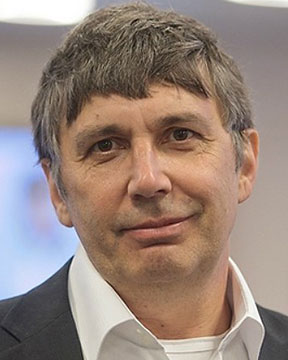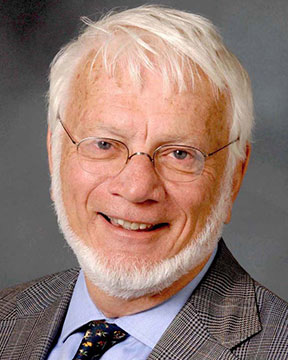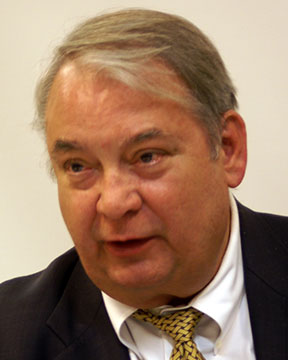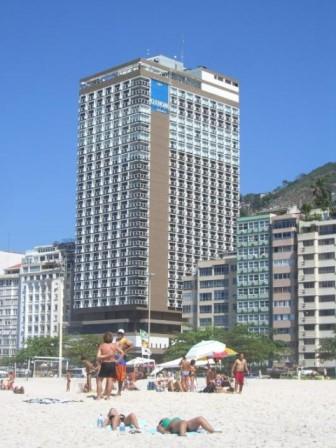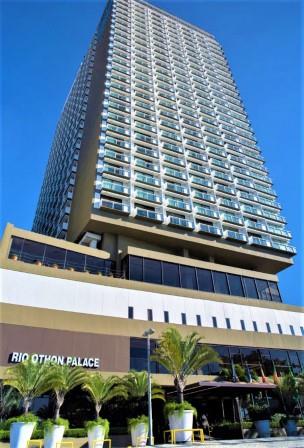ORALS
SESSION: ManufacturingTuePM3-R4
Defense / Safety | Mamalis International Symposium on Advanced Manufacturing of Advanced Materials and Structures with Sustainable Industrial Applications |
| Tue Nov, 6 2018 / Room: Sao Conrado (50/2nd) | |
| Session Chairs: Kazuyuki Hokamoto; Session Monitor: TBA |
17:40: [ManufacturingTuePM313]
Modern Protective Systems for Mitigating Explosions Nikoloz
Chikhradze1 ; Edgar
Mataradze
2 ; Theodore
Krauthammer
3 ; Mikheil
Chikhradze
4 ;
1G. Tsulukidze Mining Institute, Tbilisi, Georgia;
2LEPL Grigol Tsulukidze Mining Institute, Tbilisi, Georgia;
3Director, Center for Infrastructure Protection and Physical Security University of Florida, Geinesville, United States;
4Georgian Technical University, Tbilisi, Georgia;
Paper Id: 144
[Abstract] The major disadvantages of the existing automatic systems of blast suppression are: the long length of response; an inadequate discharge of the blast absorbing agent required for reducing overpressure and temperature to an acceptable value; and the lack of reliability of a blast identification device in difficult conditions of underground openings, especially under long-term operation.
Basic design requirements for the protective system are: short response time from the moment of explosion to the system activation; high reliability to rule out false activation and the possibility of failure to detect an explosion; high reduction of shock wave overpressures; capacity to extinguish secondary blasts and ensuing fires— system should remain active for a few minutes; it shall not interfere in the normal functioning of the tunnel and have an ability to adapt to the tunnel shape and size; the system components shall be strong enough to withstand all loads and high shock; low cost of production, installation, and performance monitoring.
Subject to these requirements, a new blast protection system has been developed by the G. Tsulukidze Mining Institute and Center for Infrastructure Protection and Physical Security (CIPPS) within the frames of the NATO SPS programme, Shota Rustaveli National Science Foundation (SRNSF) and International Science and Technology Center (ISTC) [1, 2, 3].
The system consists of the following three sub-systems: i) a shock wave high-speed suppression section, in which high pressure is generated upon the initiation of the pyrotechnic gas generator; ii) a suppression section with a long-term action, in which high pressure is obtained by using a pump; iii) a system activating device. The system contains a wireless device for the detection of explosions. This paper presents the results of the testing of the Automatic Protecting System from explosion in an underground structure.
References:
[1] E. Mataradze, N. Chikhradze, T. Krauthammer, GE P 2017, 6632 B
[2] Edgar Mataradze, Nikoloz Chikhradze,2, Irakli Akhvlediani, Nika Bochorishvili1 and Ted Krauthammer, http://iopscience.iop.org/article/10.1088/1755-1315/44/5/052012/pdf
[3] N. Chikhradze, E. Mataradze, M. Chikhradze, T. Krauthammer,IAPS, ISIEMS, Sixteenth International Symposium on the Interaction of the Effects of Munition with Structures, Destin, Florida USA, 9-13 November 2015
SESSION: AdvancedMaterialsMonAM-R6
| 4th Intl. Symp. on New and Advanced Materials and Technologies for Energy, Environment and Sustainable Development |
| Mon Nov, 5 2018 / Room: Guaratiba (60/2nd) | |
| Session Chairs: Fernand Marquis; Alain Tressaud; Session Monitor: TBA |
11:45: [AdvancedMaterialsMonAM02] Invited
Development of Hybrid Reinforced Corrosion Resistant Polymer Concretes Nikoloz
Chikhradze1 ;
Fernand
Marquis2 ; Guram
Abashidze
1 ; Davit
Tsverava
3 ;
1G. Tsulukidze Mining Institute, Tbilisi, Georgia;
2San Diego State University, San Diego, United States;
3LEPL Grigol Tsulukidze Mining Institute/M.Sc. Student of Georgian Technical University, Tbilisi, Georgia;
Paper Id: 59
[Abstract] Polymer concretes, unlike common concrete (produced based on cement, as cohesive material), are notable for high durability on compression 50-90 MPa, and especially, on tension 6-10 MPa, with unique corrosion resistance. However, they are also associated with negative properties, such as high creep deformability. Because polymer concretes work well on tension, their application is prospective for the production of shock resistant construction materials, but for this, strengthening by additional reinforcing mechanisms is necessary. In addition, because of differences in the durability and deformability on compression, as well as on tension, it is important to reinforce the polymer concrete's tensile and bended properties.
This work presents and discusses the reinforcement of polymer concrete by hybrid fibers. The major goal of this work is the production of such polymer concretes with high durability on tension and high shock resistance that preserves these properties under the effect of aggressive environments. The primary cohesive materials are unsaturated polyester resins, as polymers. The fiber reinforcements (coarse and fine) are primarily three types of basalt, polypropylene, two types of metal fibers, andesite and quartz, all selected for their chemical resistance and durability. The technological parameters for the production and processing of nano and ultrafine dispersive powders from rocks using vibration and planetary mills, and the physical and mechanical properties of these concretes are presented and discussed. The data on the corrosion resistance of these processed polymer concretes (corrosion resistance coefficient, diffusion coefficient of aggressive liquids, coefficient of liquids- sorption, and the coefficient of liquids penetration in the concretes) are also presented and discussed.
SESSION: AdvancedMaterialsMonPM1-R6
| 4th Intl. Symp. on New and Advanced Materials and Technologies for Energy, Environment and Sustainable Development |
| Mon Nov, 5 2018 / Room: Guaratiba (60/2nd) | |
| Session Chairs: Janina Molenda; Michael Zharnikov; Session Monitor: TBA |
15:15: [AdvancedMaterialsMonPM108] Invited
Fabrication of Nanocomposites by Mechanical Alloying and Explosive Consolidation Nikoloz
Chikhradze1 ; Guram
Abashidze
1 ;
Fernand
Marquis2 ; Mikheil
Chikhradze
3 ;
1G. Tsulukidze Mining Institute, Tbilisi, Georgia;
2San Diego State University, San Diego, United States;
3Georgian Technical University, Tbilisi, Georgia;
Paper Id: 212
[Abstract] Bulk nanostructure materials are characterized by high specific strength, hardness, corrosion, and wear resistant properties, and in particular, conditions by super-plasticity [1, 2, 3]. They exhibit specific electrical, thermal, magnetic, optical, chemical and other properties. Accordingly, the demand on nanoparticles and bulk nanocomposites in increased for practical application. Therefore, the development of new technologies for fabrication of bulk nanocomposites is big challenge.
This paper consists of an experimental investigation and manufacture of multifunctional bulk nanostructured composite materials in Ti-Al-B-C, Si-B-C, SiC-B-C B<sub>4</sub>C-SiC, B<sub>4</sub>C-Si-C systems.
The coarse crystalline Ti, Al, amorphous Boron and Carbon (Graphite) elementary pure (at least 98%) powders were used as precursors. The blend with different percentage contents of the powders were prepared. The high energetic "Fritsch" Planetary ball mill was used for blend processing, mechanical alloying, amorphization, and nanopowder production. The time of processing varied in range of: 1-36h. The optimal technological regimes for nanopowder preparation are determined experimentally. Ball milled blend compacted by explosive consolidation technology and bulk composite materials are fabricated. For shock wave generation, the industrial explosives and new explosives obtained from decommissioned weapons were used in the experiments. The technological parameters of the explosive consolidation and the structure-properties relationship are presented and discussed in the paper.
References:
[1] The Second World Space Congress, 10-19 October, 2002, Houston, TX, USA., I-4-03IAF, 34th COSPAR Scientific Assembly
[2] R. Mania, M. Dabrowski et all, International Journal of Self-Propagating High-Temperature Synthesis. 2003 v. 12, #3, 159-164
[3] R.M. Da Rocha, Chapter in Ceramic Engineering Science Proceeding, Jan., 2010
15:40 Break
SESSION: AdvancedMaterialsTuePM3-R6
| 4th Intl. Symp. on New and Advanced Materials and Technologies for Energy, Environment and Sustainable Development |
| Tue Nov, 6 2018 / Room: Guaratiba (60/2nd) | |
| Session Chairs: Pengwan Chen; Werner Urland; Session Monitor: TBA |
17:40: [AdvancedMaterialsTuePM313] Keynote
Synthesis and Densification of Heterogeneous Ultrafine and Nanostructured Materials by High Rate Energy Processes Fernand
Marquis1 ;
Nikoloz
Chikhradze2 ;
Tetiana
Prikhna3 ;
Pengwan
Chen4 ; Eugene
Olevsky
1 ;
1San Diego State University, San Diego, United States;
2G. Tsulukidze Mining Institute, Tbilisi, Georgia;
3Institute for Superhard Materials, Kiev, Ukraine;
4Beijing Institute of Technology, Beijing, China;
Paper Id: 422
[Abstract] Because the strength, toughness, and other engineering properties of heterogeneous materials are strongly dependent on their grain size and density, the quest to achieve simultaneously dense and fine, ultrafine, and nanostructured grain size materials has been one of the most important issues in materials science and engineering. In this work we explore novel approaches for producing dense and fine, ultrafine and nanostructured heterogeneous materials. Typical approaches consist of acoustic cavitation, high energy planetary ball milling, reaction synthesis, and shock synthesis and modified spark plasma synthesis, followed by dynamic and static consolidation and densification pre- and post-reaction synthesis. Typical heterogeneous multiphase, multi microstructural constituent materials covered in this work consist of tungsten heavy alloys, coated graphite powders, metal silicide and aluminides and ceramic composites. The synthesized and densified materials were fully characterized by OM, SEM, TEM, EDX analysis, quantitative image analysis, X-Ray diffraction and mechanical testing. This paper presents and discusses the effect of reaction and processing parameters on the microstructure, densification and strength and toughness of typical heterogeneous materials.




